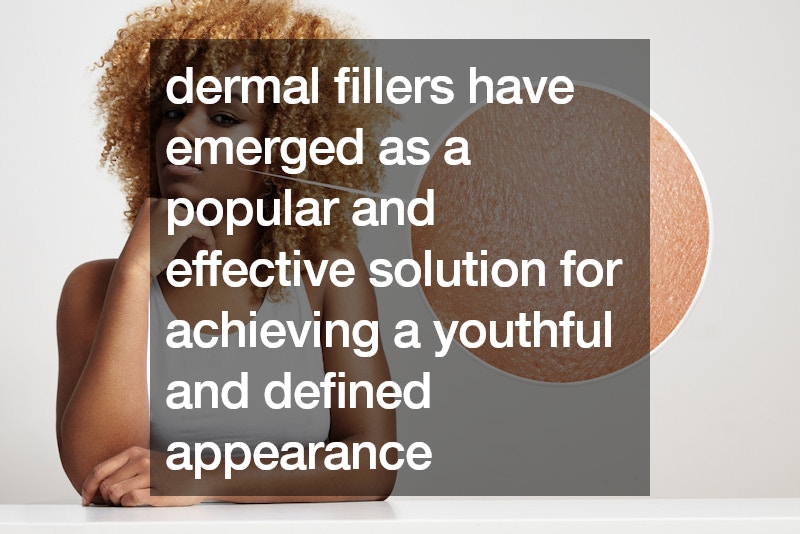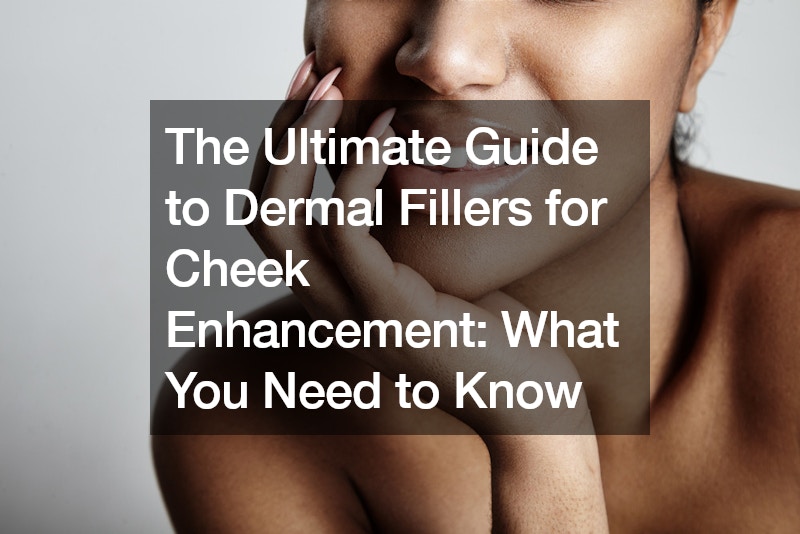Disclaimer: This website provides health information for educational purposes only and is not a substitute for professional medical advice, diagnosis, or treatment. Always seek the guidance of a qualified healthcare provider with any questions you may have.
In the ever-evolving world of cosmetic enhancements, dermal fillers have emerged as a popular and effective solution for achieving a youthful and defined appearance. Among their many applications, cheek enhancement stands out as a highly sought-after procedure. With the ability to restore volume, improve facial contours, and create a more youthful look, dermal fillers for cheek enhancement have gained significant traction.
This guide provides everything you need to know about this transformative treatment.
Understanding Dermal Fillers
Dermal fillers are injectable substances designed to restore volume and fullness to the skin. They are typically made from hyaluronic acid. Other materials used in dermal fillers include calcium hydroxylapatite, poly-L-lactic acid, and polymethylmethacrylate microspheres. These substances work by plumping the skin, filling in wrinkles, and enhancing facial features such as the cheeks.
The Benefits of Cheek Enhancement with Dermal Fillers
Restored Volume: As we age, the natural fat pads in our cheeks diminish. Dermal fillers can restore lost volume on the cheeks, creating a more youthful look.
Improved Contours: Well-defined cheekbones are often associated with youth and beauty. Fillers can enhance the contours of the cheeks, giving the face a more sculpted and balanced appearance.
Non-Surgical Solution: Unlike surgical options, dermal fillers offer a minimally invasive alternative with little to no downtime, making them a convenient choice for those seeking immediate results.
Customizable Results: The versatility of dermal fillers allows for personalized treatment plans tailored to each individual’s unique facial structure and aesthetic goals.
The Procedure: What to Expect
Consultation: The process begins with a thorough consultation with a qualified and experienced cosmetic practitioner. During this session, you will discuss your goals, medical history, and any concerns you may have. The practitioner will assess your facial structure and determine the most appropriate filler type and injection points for achieving optimal results.
Preparation: On the day of the procedure, the treatment area will be cleaned and prepped. A topical anesthetic or numbing agent may be applied to minimize discomfort during the injections.
Injection: The practitioner will strategically inject the dermal filler into the targeted areas of the cheeks. The procedure typically takes 30 minutes to an hour, depending on the extent of the treatment.
Post-Treatment Care: After the injections, you may experience mild swelling, redness, or bruising, which usually subsides within a few days. The practitioner will provide aftercare instructions, including avoiding strenuous activities and excessive sun exposure for a short period.
Choosing the Right Practitioner
Selecting a skilled and experienced practitioner is crucial for achieving safe and satisfactory results. Here are some tips for finding the right professional:
Credentials and Experience: Ensure that the practitioner is board-certified and has extensive experience in administering dermal fillers, particularly for cheek enhancement.
Before-and-After Photos: Reviewing before-and-after photos of previous patients can provide insight into the practitioner’s skill and aesthetic approach.
Patient Reviews: Reading patient reviews and testimonials can help gauge the overall satisfaction and experiences of others who have undergone the procedure.
Consultation: A thorough consultation is essential for assessing the practitioner’s understanding of your goals and their ability to create a customized treatment plan.
Risks and Considerations
While dermal fillers are generally safe, it is important to be aware of potential risks and considerations:
Temporary Side Effects: Common side effects include swelling, redness, and bruising at the injection site. These effects are usually temporary and resolve within a few days.
Allergic Reactions: Although rare, some individuals may experience allergic reactions to the filler material. Discuss any known allergies with your practitioner before the procedure.
Asymmetry: In some cases, the results may appear uneven or asymmetrical. Skilled practitioners can usually correct this with additional filler or adjustments.
Infection: As with any injectable procedure, there is a small risk of infection. Ensuring the procedure is performed in a sterile environment by a qualified professional can minimize this risk.
Maintaining Your Results
Dermal fillers last depending on the type of filler used and other factors such as metabolism and lifestyle. On average, results can last from six months to two years. To maintain your enhanced cheeks, follow these tips:
Follow-Up Treatments: Schedule regular follow-up treatments as recommended by your practitioner to sustain the desired volume and contour.
Healthy Lifestyle: Maintain a healthy lifestyle with a balanced diet, regular exercise, and adequate hydration to support overall skin health.
Sun Protection: Protect your skin from sun damage by wearing sunscreen and avoiding excessive sun exposure.
Conclusion
Dermal fillers for cheek enhancement offer a versatile and effective solution for those seeking to rejuvenate their appearance without undergoing surgery. By restoring volume and enhancing facial contours, dermal fillers can create a more youthful and sculpted look. With proper consultation, an experienced practitioner, and diligent aftercare, you can achieve beautiful, natural-looking results that enhance your overall appearance and boost your confidence.
In the realm of cosmetic enhancements, cheek enhancement with dermal fillers stands out as a transformative and accessible option. By understanding the procedure, benefits, and considerations, you can make an informed decision and embark on a journey to a more youthful and radiant self.
.





